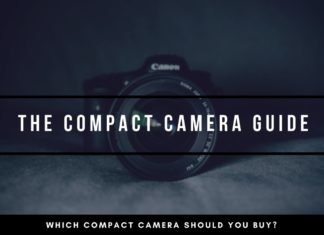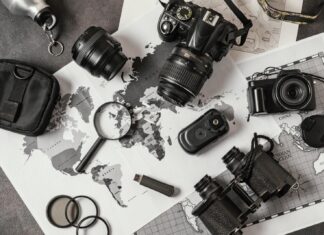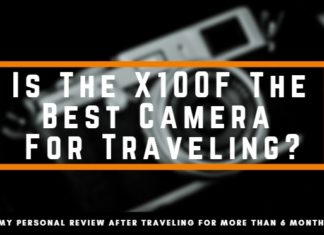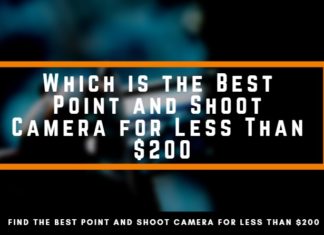Traveling and photography are a combination that goes hand in hand for a lot of photographers. If You already are enjoying photography at home, then it is only natural that You enjoy it, even more, when You are in a different country and are taking in a lot of different impressions.
You like to share the impressions with Your friends and family members, that weren’t able to accompany on Your trip and You like to share this unique point of view of places on this earth, that not everyone has the opportunity to visit.
The next step is to decide which gear You want to use and how You can present Your experiences in the best possible way.
This is a huge challenge for a lot of photographers and they are very doubtful when it comes to choosing the right camera for traveling.
After using the Fuji X100F not only in the streets on Berlin but also while traveling through Southeast Asia, I come to the conclusion that I couldn’t ask for a better camera. If I had to decide again, I would always go for this camera and for a price of a little more than $1.000 I get a complete system, that allows me to create the images that I was always looking for.
Now I want to share my thoughts on why the X100F is the best camera for traveling in my opinion.
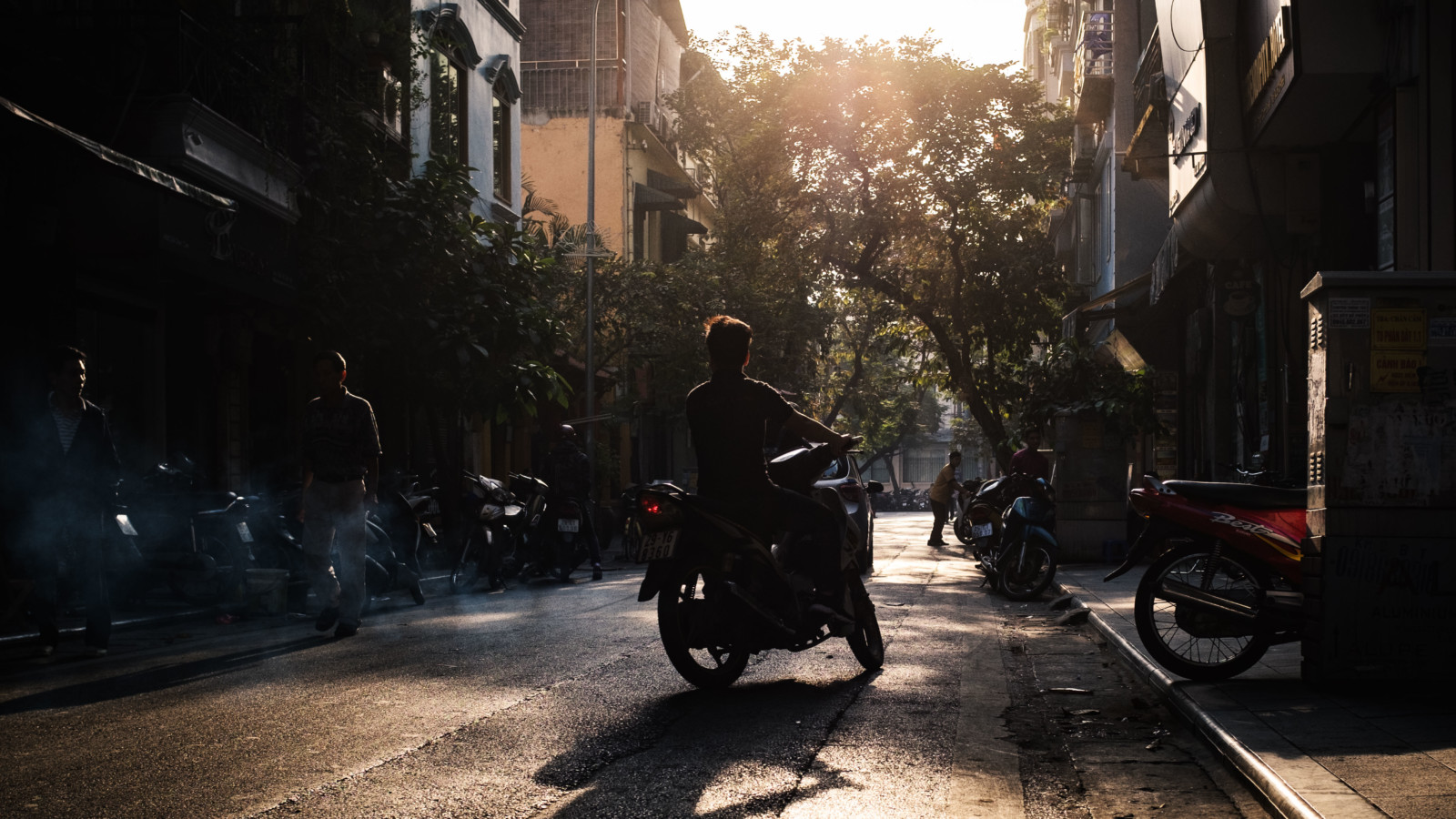
What to look for in a Travel Camera
First of all, I want to share my thoughts about the criteria that a travel camera should fulfill. In comparison to cameras that You are normally using, there might be a few key differences and aspects that become more important when You are traveling.
Here are my key-points for a camera for traveling.
Good Image Quality
Photography is still about great images. The technology of the camera and the quality of the lens do make a huge difference when it comes to the image quality. I will agree, that cameras are already well advanced and that the differences are marginal, but things such as the dynamic range still are very dependent on the camera that You are using.
Especially when You are planning to print the images or show them on a high-resolution screen to Your family and friends, the camera should be able to deliver high-quality images.
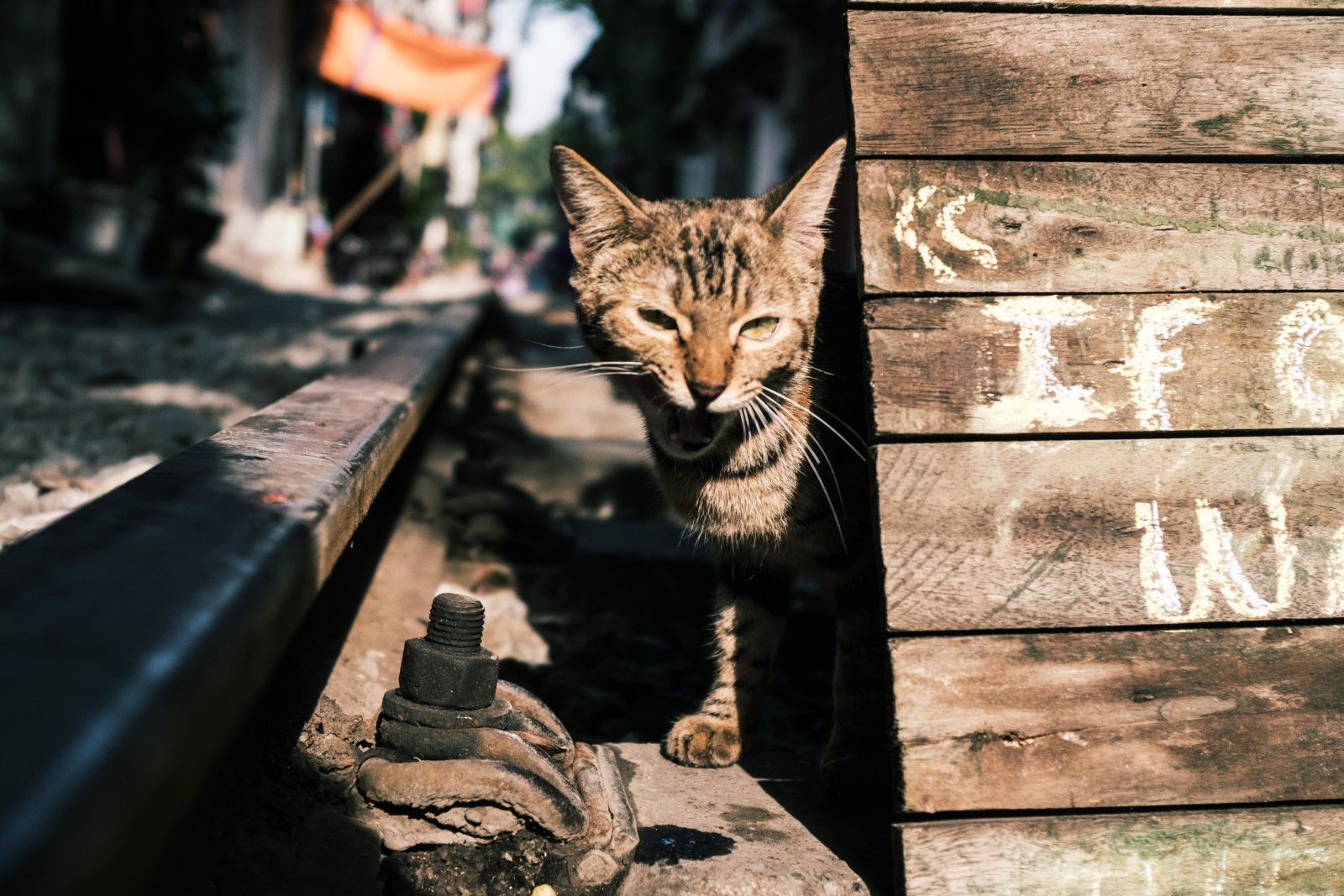
The megapixel count alone isn’t the deciding factor when it comes to the image quality. There are a lot of different factors that come into play, beginning in the optics, going to the image sensor and processor.
How the camera does “develop” the images depends highly on the manufacturer. Nonetheless, You should always make sure to post-process the images. Therefore, I won’t state my opinion analyzing the JPEGs, but the ability to post-process the RAW files and how good the final image quality can be.
Compactness
When traveling, we are already heavy packed and have more things with us than the camera equipment alone.
In contrast to Your home turf where You can just stroll around with Your camera and then return home, there are a lot of different things to consider when taking the camera equipment for traveling.
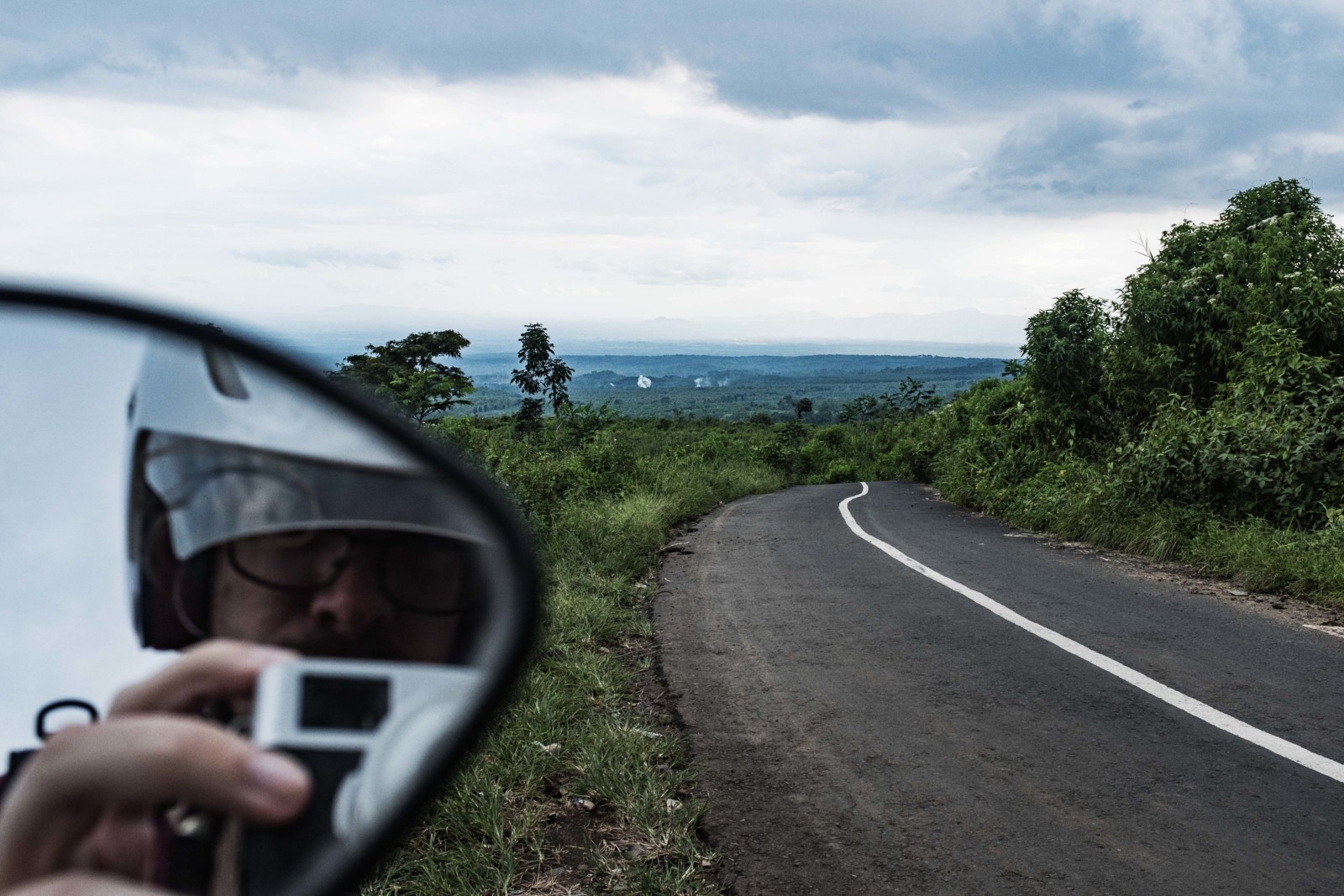
First, You want to make sure that the camera equipment does fit into the hand luggage. I would never trust an airline enough to check-in my camera equipment. Not only because I fear that the baggage might get lost, but also because the baggage is moved very roughly. Fragile equipment like my camera I wouldn’t want to be damaged on a flight.
This means, that the camera and the gear itself should be small and lightweight.
The reduction in weight is not only important to comply with the flight regulations, but also to not get tired while wearing the camera for a whole day. When we are traveling, we are carrying the camera with us much more and although it might sound silly, a difference in weight of a few hundred grams can be very noticeable at the end of a long day of shooting.
Versatility
The versatility goes hand in hand with the compactness. The more versatile a camera is, the less gear do I need and the lighter my whole camera equipment will be.
In my definition, versatility does mean that I can shoot pretty much anything with my camera that I want. I don’t need to swap the gear and don’t have to carry much equipment with me to get the shots that I want.
With the right camera, I can just use the same setup to capture every picture that I want. Whether it is a landscape, a portrait, or a typical Street Photography picture.
Durability
One of my biggest fears when traveling is that the camera that I currently use will break and that I am in the middle of nowhere, and won’t even have the opportunity to buy a new camera to replace the old one. Minding the additional cost and hassle it would be to get a replacement camera, I want to make sure that the camera that I use for traveling is durable and won’t run into lots of problems.
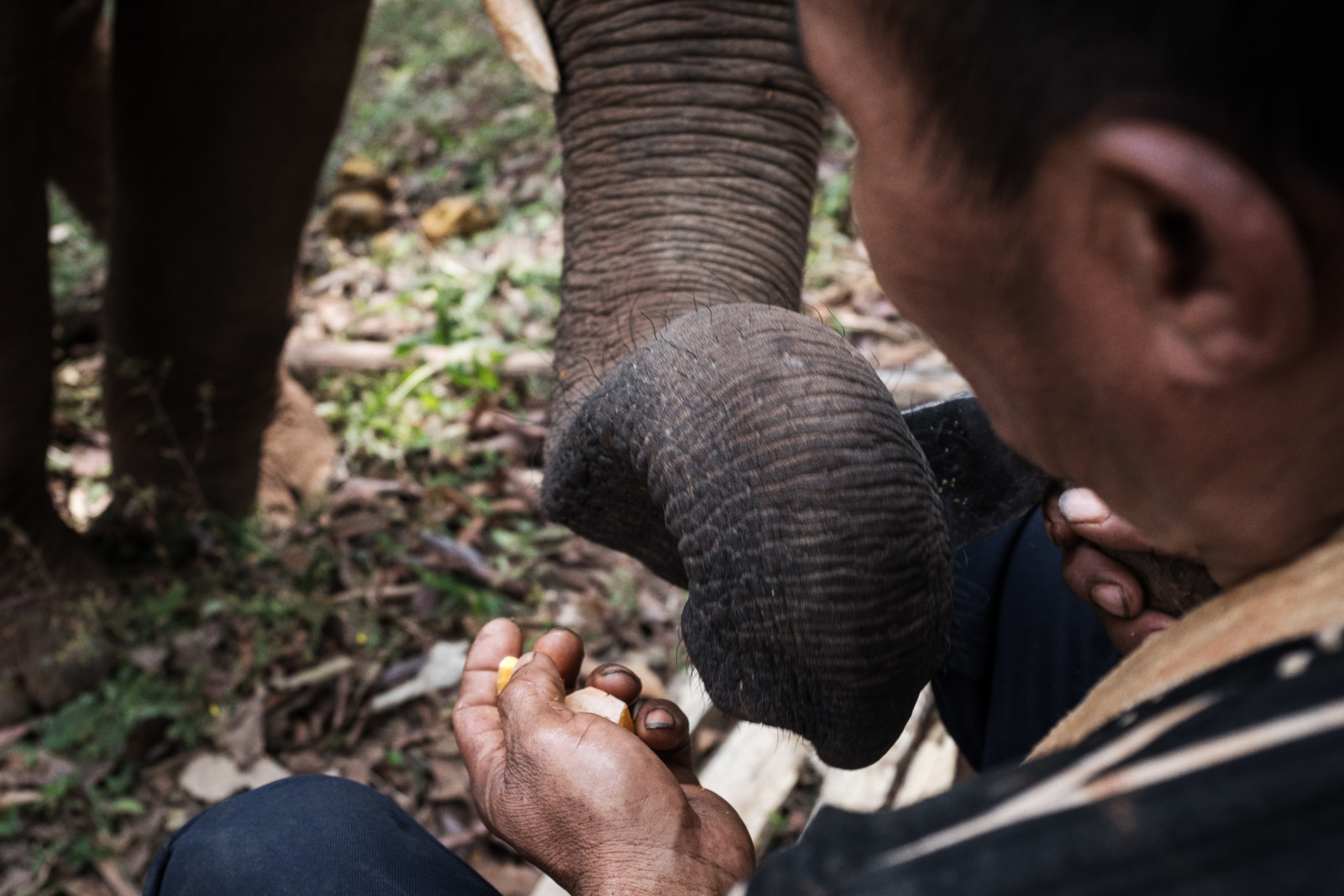
Traveling can put a lot of stress not only on You but also on Your gear. You carry the gear, it will shake a lot, travel in warm weather or at freezing temperature. A slight rain might surprise You and get Your camera wet or You want to take pictures during Your hike and dust may settle on Your lens.
A camera for traveling should overcome all this and be a very reliable partner.
My Verdict on the FujiX100F as a Travel Camera
Now that I have laid out my criteria that make the perfect camera for traveling. I want to do an honest review of the Fuji X100F after having a lot of experiences of using this camera in difficult environments and while traveling.
When I was traveling through Southeast Asia, I did this trip with the goal in mind to photograph the sulfur miners at the Mount Ijen. This is one of the most dangerous workplaces in the world and the sulfur smoke can pose a severe threat to Your health.
I was very worried if the X100F would make it through this difficult time, but now that I am still able to use it, I want to praise this body and tell the story on how good this camera really is.
Image Quality
As I already mentioned, for us photographers the image quality is one the most important things when thinking about buying a new camera. If we are already investing our time to travel to far places, we don’t want our memories to be ruined by a camera, that doesn’t really display how we perceived the place with our very own eyes.
We want to have a digital representation of the travel destination in the best possible way. That doesn’t have to mean that every picture is beautiful in itself, but that the camera is able to use the full potential of the place and its environment.
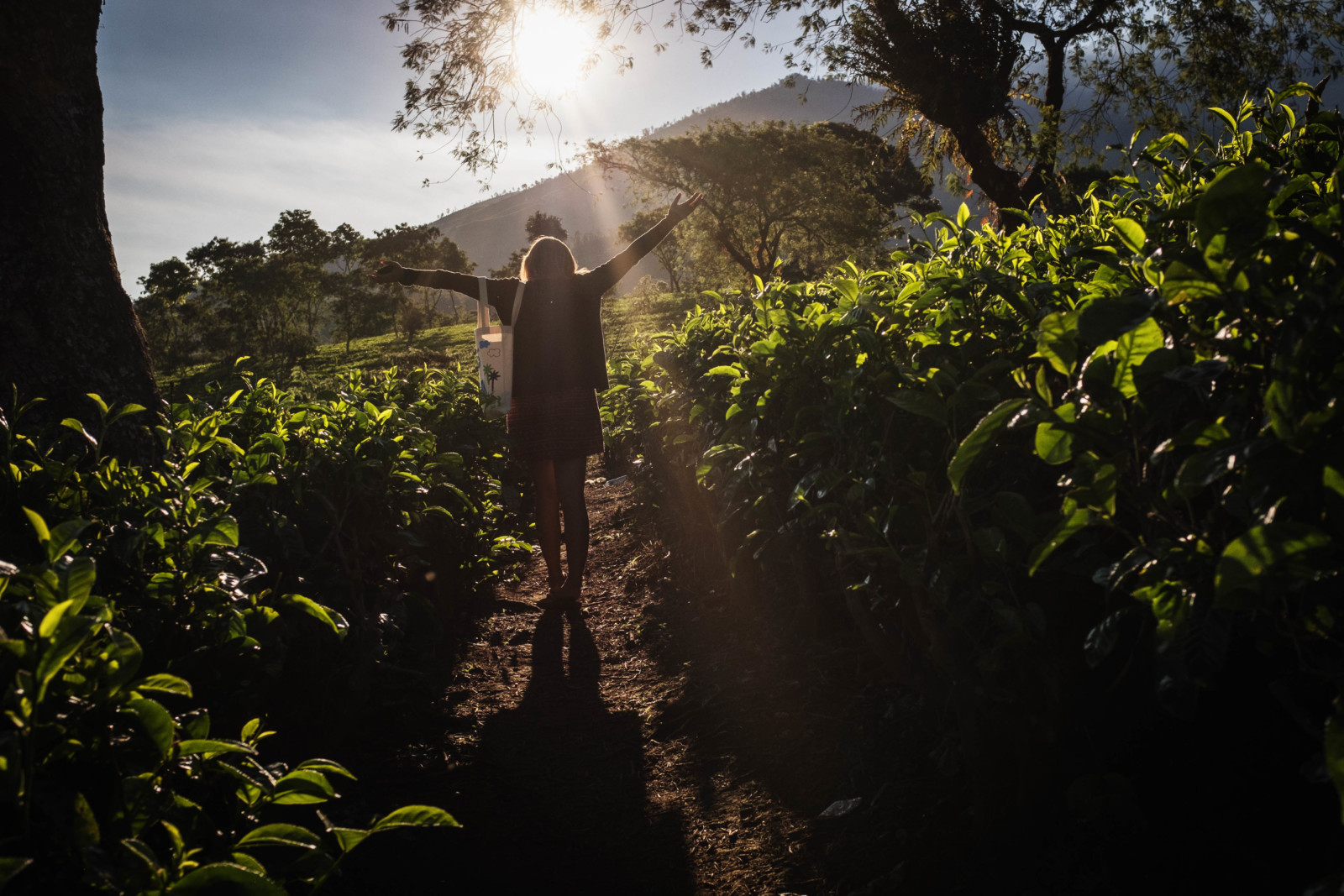
Critical points are, that the camera does well in low-light and other not so perfect conditions. Nowadays, every modern mirrorless cameras for under $500 can pretty much take great shots when the light is there and You have enough time to find the right settings and take multiple attempts at getting the perfect picture. But how capable is the camera when You have to act quickly and work in hectic situations?
As a Street Photographer, I am already resistant to a lot of the stress that I face when trying to find the perfect moment and not messing it up. If You are a wedding photographer, You may know how it feels when You are close to the kissing scene and better don’t mess that one up.
Funnily enough, when I traveled through Indonesia and found myself in a small homestay, the first thing that I was able to photograph was a traditional wedding ceremony with my X100F. Since it gets dark very early in Indonesia, the whole ceremony I was using my flash and the camera. Not knowing what to expect, but curious to see such a wedding, I surely didn’t want to mess this one up.
And I have to say, that the X100F was able to be a great company and delivered excellent results. Although I found myself in a very tough spot and was surrounded by the wedding party and was overwhelmed by all the impressions, the images still turned out very decent.
The RAW image quality gives me a lot of freedom to play around in the post-processing and even if a picture wasn’t perfect at first, there are more than enough options to recover the image later on. This is one of the key findings when talking about the image quality of digital cameras.
They give us the freedom, that even when the picture is not well exposed and the colors may be off a little bit, that we can still recover the images. The X100F has a great dynamic range when it comes to the shadows. Not seldom I am recovering areas, that are underexposed by more than 5 stops.
On the other hand, I also want to mention that the camera is more restricted when it comes to highlights. There is a very known risk involved that areas will blow out very easily and this is one of the reasons why I underexpose some images so heavily.
However, after getting accustomed to this characteristics and knowing how to work around it, You can create beautiful pictures even in difficult light conditions. I enjoy taking pictures including the sun in a very direct manner. Even when shooting in the Thai jungle, I didn’t run into problems after underexposing the pictures in the first place.
Another critical point is the lens.
The aperture of F/2 works very well for me and the focal length of 35mm (full-frame eq.) is an all-around great focal length. I experimented a bit with a shallow depth of field and a very open aperture while doing Street Photography in Vietnam, as well as in Indonesia and I find the results to be very impressive.
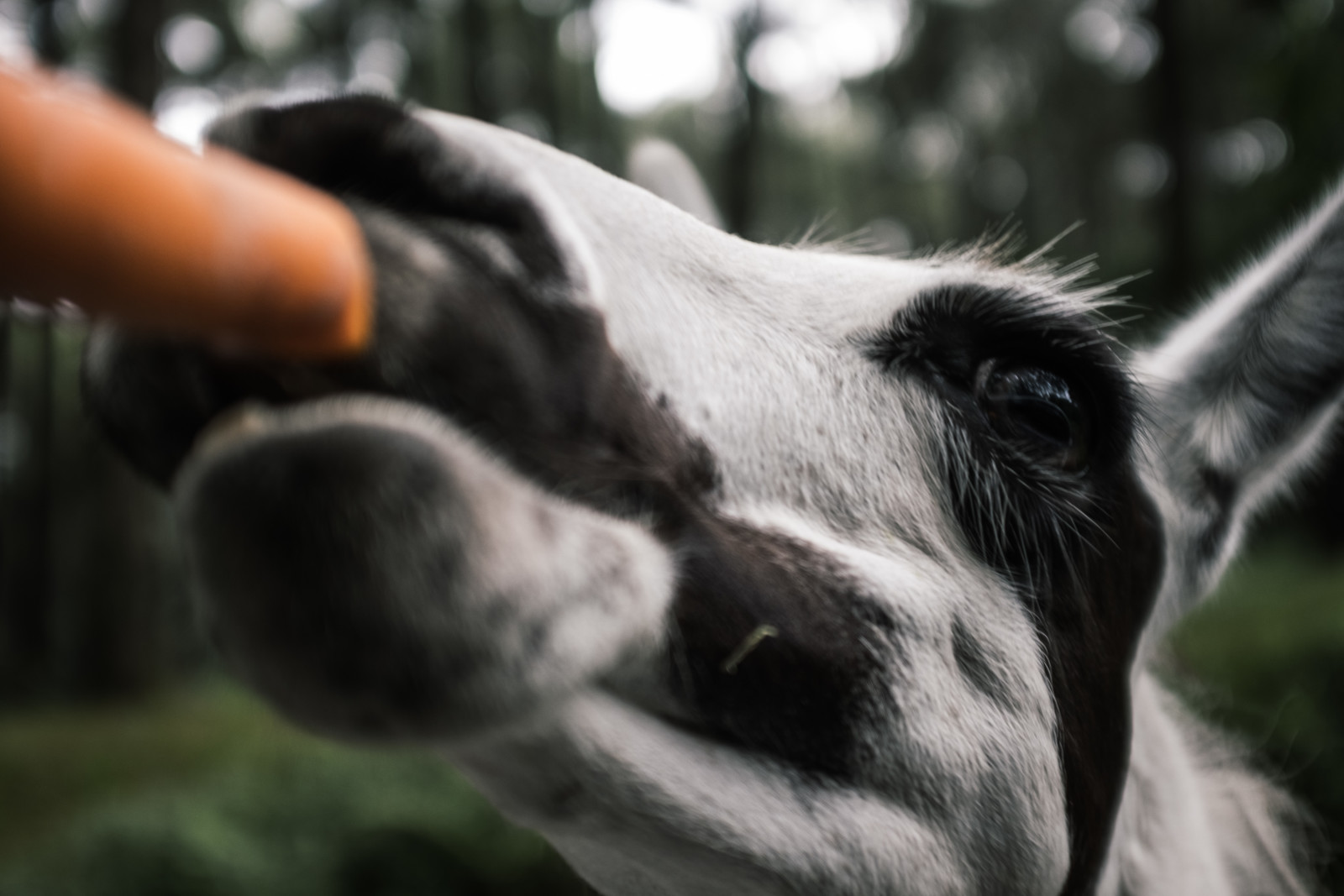
Of course, focusing will get a lot more challenging when shooting with such a narrow depth of field, but I never found this to be a problem. Most importantly, I always feel like I have the control over the camera and if a picture doesn’t turn out as I wanted, I don’t blame the camera, but me.
This was different when using other DSLRs and often times I felt quite powerless and frustrated with the results.
Talking about image quality, the X100F doesn’t take the first spot, comparing it to a Sony A7RIII, but it is a strong runner-up and capable of delivering professional level images.
Compactness
The second most important feature of a camera for traveling is the compactness for me. When I am traveling, I explore the city or the place with the camera around my neck and would carry it all day with me. Especially when traveling to countries where the climate is a lot warmer and more exhausting, I don’t want to have a camera, that puts additional strain on my body.
Compared to my second choice of a travel camera, the RicohGR II, the Fuji X100F is a little bulkier, so I definitely need to carry a small bag with me to have a safe place for the camera and the spare batteries that I will need.
The weight is less than 500 gr. and includes the body and the lens as well. One of the strong points of this camera is the fixed lens. Not only in regards to the compactness but also to the versatility and durability, which I will explain more detailed later.

Since the lens is fixed, I don’t have to carry any other lens with me. Lenses can quickly weigh a few hundred grams itself and not having to worry about the right lens setup is a pretty big advantage and does me a huge favor.
Therefore, the X100F does act more like a compact camera, than a complete mirrorless camera where I can change the lenses. But the light design of less than 500 gr. does wonders to Your body, when You are carrying the camera all day.
Whether You want to carry the camera around the neck, or around Your wrist is Your choice and the weight allows You to switch between both positions comfortably.
In my travel backpack, the camera takes very little space and I always will find a spot to transport this body safely. So when it comes to traveling, there is unlikely a better combination of compactness and image quality that You can find.
Versatility
When it comes to the versatility of this camera, I believe my verdict may surprise a lot of photographers, that aren’t familiar with using a fixed lens in their photography.
The X100F comes with a fixed 35mm lens. You can’t change the lens no matter how hard You try. You will have to use this lens for the entire duration that You are shooting with this camera. You should be aware of this fact, before being disappointed while traveling that Your Fuji Lenses don’t work on this camera model.
I am already very familiar using a prime lens for my Street Photography and I pretty much know what I want to photograph. The 35mm focal length does come very close to our natural perception and doesn’t require much experience in getting used to.
However, if You have no experience with a prime lens, then it would be a pretty big risk to undertake a longer trip with a new lens and You won’t understand why this lens doesn’t limit me, but actually does provide more freedom.
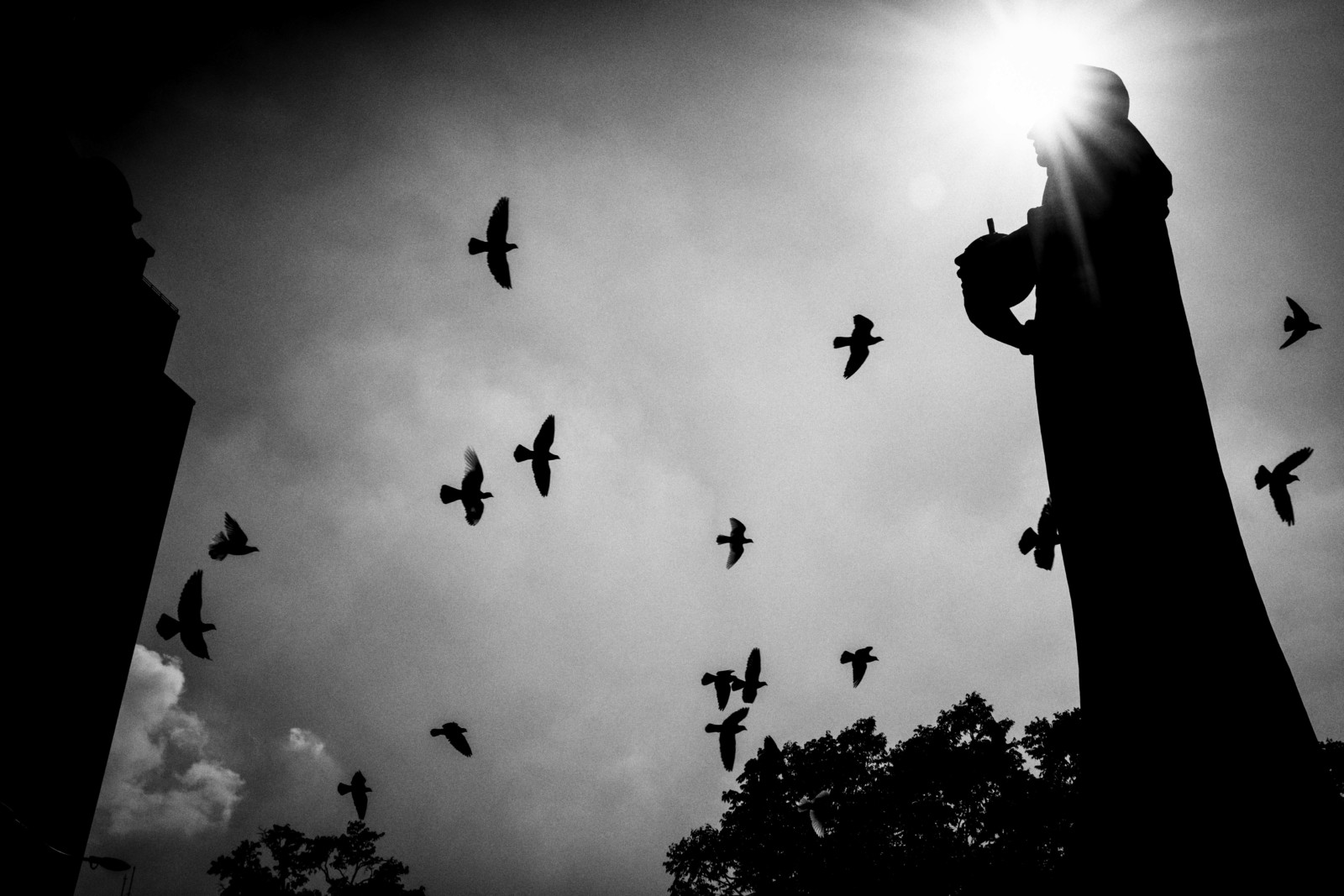
The 35mm is, in my opinion, the best single focal length in photography. It is close on the wide-angle side and can absorb a huge area while being able to get close to Your subject. Instead of using a zoom, I am familiar with moving myself closer to the subject and I don’t have a problem with getting very close to people when I want to have a close-up of them. Even facing strangers, I don’t really get intimidated and will take a close portrait if I want to.
During my travel, I was able to capture panoramic scenes, wildlife, people and pretty much everything that I desired to photograph. Rarely had I moments where I thought that a different setup would have yielded better results. The X100F just works great for me, during the day, at night, while zone-focusing or using a narrow depth of field.
Partly due to my experience of using this camera now for more than one year, but also because the camera simply has that much potential, that I feel I am using to a greater extent.
Durability
When I did my trip to Southeast Asia, I pretty much saved all my money from the previous job that lasted for a little over one year. Living very frugally, I had some disposable money which I would have invested in a new camera if the X100F would have broken down.
Needless to say, I didn’t treat this camera very well. I went to Mount Ijen with it to photograph the sulfur miners and wasn’t hesitant to stand in the toxic sulfur smoke for more than 15 minutes. After leaving the scene, I already noticed that my camera turned yellow and the dust settled on the body.

To my surprise though, even almost one year later, the camera still works. The power button to turn the camera on and off suffered a bit from my rough treatment, but other than that, the X100F still works like a charm.
I believe this is also attributed to the single lens design. Not being able to change the lens, the mount can be more enclosed and doesn’t need to be flexible. This can allow for a more flexible design. Cameras with interchangeable lenses might have a more difficult time when shooting in rough conditions where dust and rain can be a real danger.
My Recommendation as the X100F for Traveling
Saying that the X100F would be the best camera for traveling would be a little bit shortsighted. I have a lot of experience shooting with this camera and I know that I can cover all my photographic interests with a 35mm lens.
Therefore, the Fuji X100F is definitely the best camera for traveling for me and I would recommend it to anybody who already has experience in using the same prime lens for a longer time.
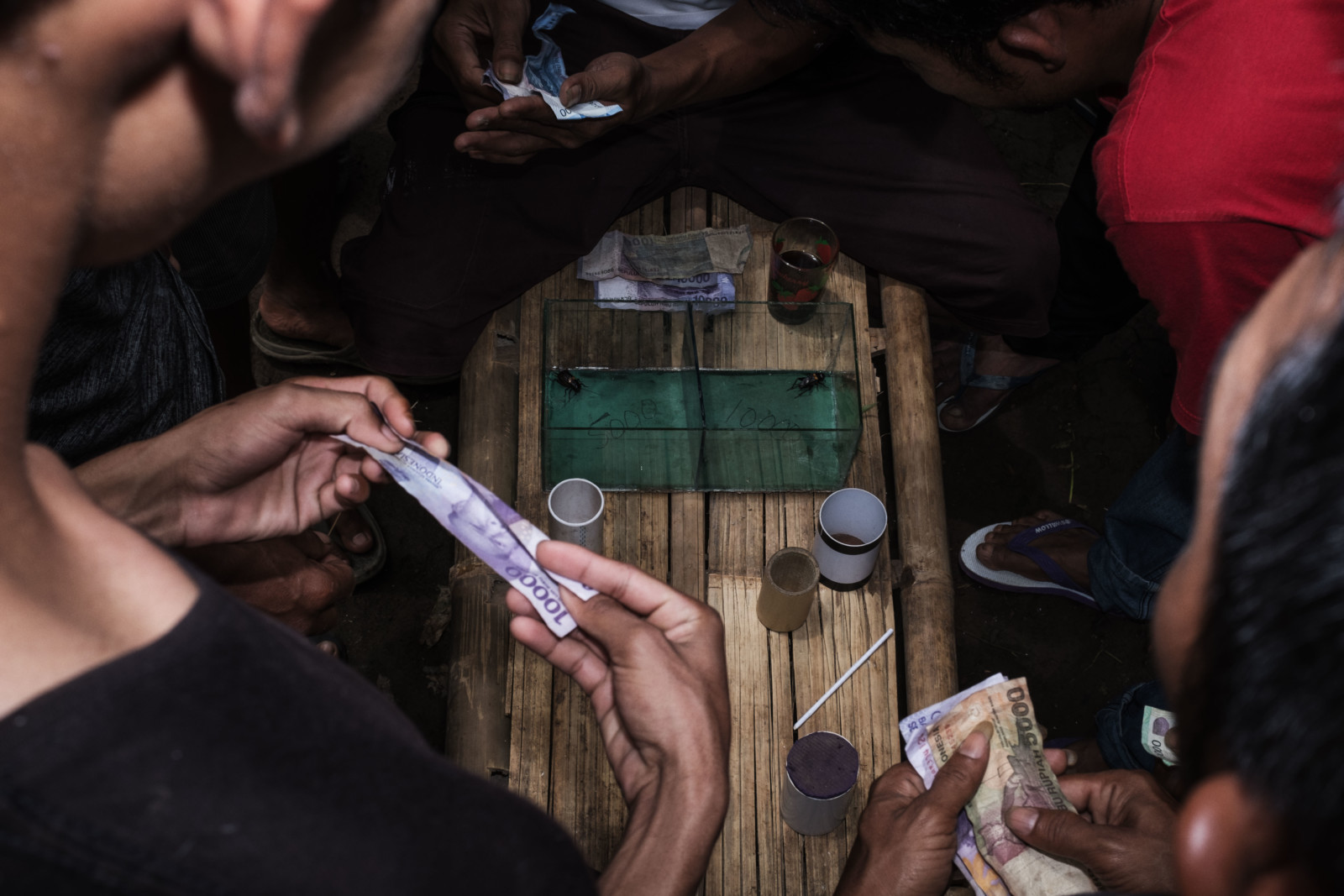
If You are not very interested in photography and just want some good snapshots that are better than Your mobile phone, I would actually recommend to get a point and shoot camera for less than $300. These cameras are very easy to use, yet they provide great results for a small price.
For anybody else, who is a little more ambitious, interested in photography and wants to have powerful RAW images, the X100F is the best travel camera in my opinion.
Keep in mind though, that You will deplete a lot of batteries during a full day of shooting. Therefore, having a few extra batteries and at least two chargers are also part of my travel gear. However, these are just shortcomings that every mirrorless camera has to some extent.
As a final verdict, the X100F is my absolute favorite pick when it comes to traveling and I wouldn’t have it any other way.
- 24.3MP X Trans CMOS III APS C sensor with no low pass filter and X Processor Pro
- 8 way focus lever plus the number of focusing points has been expanded from 49 in previous models to 91 (up to 325 points)
- Built in ISO dial, incorporated into the shutter speed dial and operating temperature is 0 degree Celsius to 40 degree Celsius (+32 degree Fahrenheit to +104 degree Fahrenheit); Operating Humidity: 10 to 80 percent (no condensation)
- AF mode(single / Zone / wide tracking). Hot shoe: Dedicated TTL Flash compatible. Exposure control: TTL 256 zone metering, Multi / Spot / Average / Center Weighted
- New np w126s lithium battery; Focus distance Approx. 10 centimeter Infinity / 3.9 Inches Infinity




















